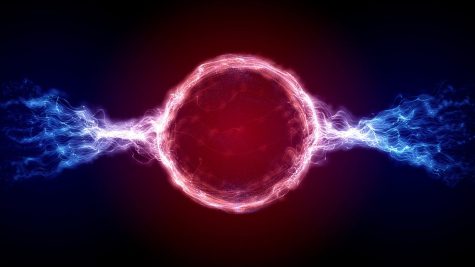What Nuclear Fusion Means for our future
December 15, 2022

Nuclear Fusion. You may not think much about it, that this doesn’t mean anything, or that it won’t affect you. Well, since it may change the way energy is handled from now on, I’ll tell you a bit about it. On December 13th, a monumental breakthrough in nuclear fusion was announced. For the first time in history, we have produced more energy out of a reaction than the energy it took to cause the reaction. According to sciencenews.org “On December 5th…a 3-million-joule burst emerged from a peppercorn-sized capsule of fuel when it was hit with a 2-million-joule laser pulse.” This reaction is a demonstration or replication of how the sun creates its energy.
You may be wondering how this is monumental. This reaction, if replicated enough, could potentially be a source of clean energy. Unlike nuclear weapons or fission reactors that use heavy atoms such as Uranium and break them into smaller and potentially radioactive atoms, this reaction seems to simply stop when the magnetic energy surrounding it is dropped. This means that while scientists are attempting to develop this into a serious means of energy, towns or cities won’t be ruined or put at risk in the process.
While not producing radioactive products, controlled nuclear fusion is much harder to achieve than fission reactors. In nuclear fusion, light atoms fuse to create heavier atoms. In the sun, this occurs when protons in hydrogen atoms react with other protons to form helium. Gravity helps cause the reactions in the sun, but getting the protons to fuse in Earth’s gravity requires tremendous amounts of high pressure and temperatures to squeeze the atoms together.
The National Ignition Facility (NIF) was the one that was able to achieve these marvelous results. In the 1960s, scientists at Lawrence Livermore National Laboratory (LLNL) came up with a hypothesis that lasers could be powerful enough to cause nuclear fusion in a controlled lab setting. John Nuckolls led this experiment, which kicked off 60 years of research and development in lasers, optics, diagnostics, target fabrication, computer modeling, simulation, and experimental design. The development of stronger lasers eventually led to the creation of the NIF, the world’s largest and most energetic laser system. At NIF, researchers use powerful laser beams to replicate temperatures and pressures located in the core of stars and giant planets, or even exploding nuclear weapons.
This could be a game changer for President Biden’s goal of a net-zero carbon economy. Biden has signed Climate laws such as the one about carbon emissions in August. A study conducted on said law says that it has the potential to cut carbon emissions by about 40%. The first federal calculations illustrate that by the end of the decade, with this law in order, it will cut carbon emissions by about 1.26 billion tons. The $375 billion that was said to be spent in the name of “clean energy” perhaps helped fund this breakthrough.













Margaret Wilson RN MSN EdD • Jan 23, 2023 at 11:28 pm
Great writing Caitlyn, you ability to take a complex scientific topic and make it clearly understandable. That ability to make complex simple is a great gift in writing. Well done .